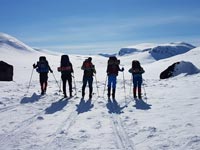
Bob from the Nature Travels team discusses why hiking enthusiasts should be taking to their skis in winter.
Are you a keen hiker? Do you love exploring wild and beautiful areas under your own power, feeling the sun on your face, the wind in your hair, and the freedom and joy of outdoor life in your heart?
If the answer is “yes”, then we have some good news:
You don’t have to wait for summer! A ski touring holiday may be just what you need!
Even if you’re an experienced walker or trekker, you may never have considered that many of the things you love about hiking can also be enjoyed in wintertime, when nature not only looks very different but offers a whole new set of challenges, experiences and adventures.
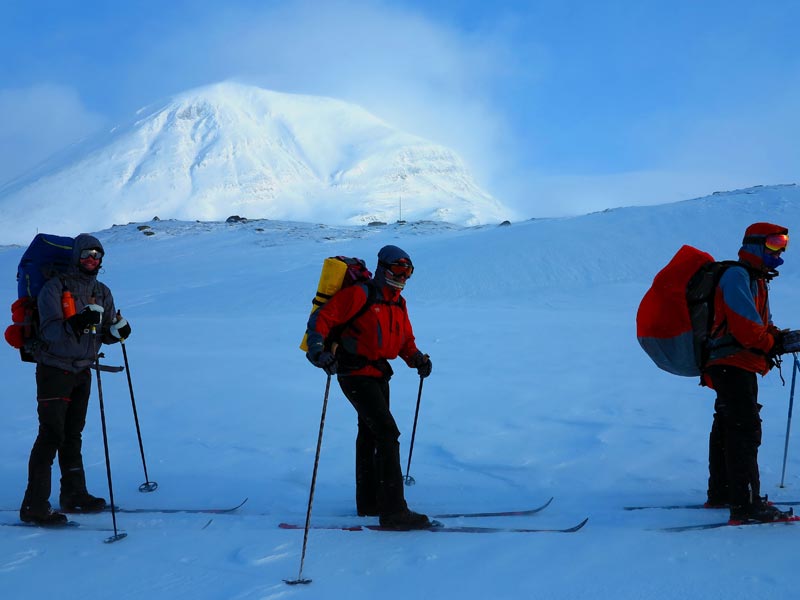
Not convinced? Let’s see if we can change your mind…
Do I need to be able to ski to go ski touring?
Yes and no. Yes, of course you’ll need to ski, but you don’t need to have much technical skiing experience to be able to join a tour. We offer a range of tours aimed at those new to ski touring and even one suitable if you’re completely new to skiing.
Isn’t it cold?
Yes and no! Many feel the “best” time for ski touring is during the “spring winter”, from March to early May (if you’re never thought of a winter holiday in April, think again – it’s the perfect time for ski touring and also for dog sledding).
At this time of year, the hours of daylight are long, with a real spring feeling in the air and warmth to the sun, and temperatures are normally (though not always of course) milder than earlier in the winter.
By April, temperatures will usually still drop below freezing at night but will often be around or even a few degrees above zero during the day.
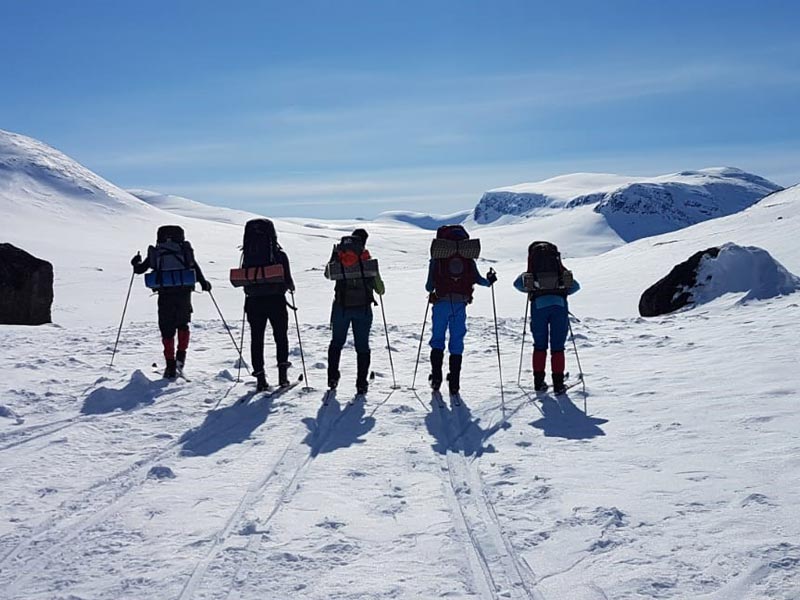
That still sounds cold to me….
As the air is so much drier in the Nordic countries than you may be used to, you may also be surprised how “warm” you feel even in sub-zero temperatures compared to a cold day in the damp air of the UK, for example.
Personally, I find -10 degrees C in Lapland much more pleasant than +3 degrees here at Nature Travels HQ on the south coast of England.
If you can take a cold day of hillwalking in the UK in May, you’ll be feeling toasty on a ski tour in the Sweden, Finland or Norway in April!
That said, experiencing the cold is one thing that makes winter adventures so appealing – provided you’re properly equipped to stay comfortable and safe, of course.
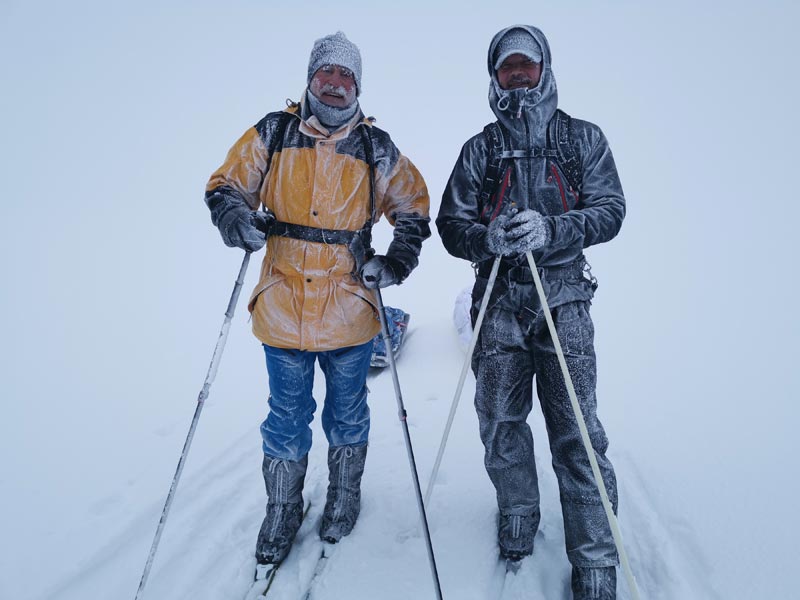
While most of our ski tours take place earliest from February onwards, the Halti and Lemmenjoki tours in Finland mentioned below run all through the winter from December onwards. When I did the Halti tour in early February, it was -32 degrees C at times. And for our guests doing the Lemmenjoki tour the same week a few hundred kilometres to the east, it was -40! That’s pretty cold – but I wouldn’t have missed it for the world.
But I like camping when I hike. You can’t do that on a ski touring holiday, can you?
You most certainly can! The majority of tours are based on skiing between simple cabins, but if you have a taste for camping, see the Halti and Lemmenjoki tours below. Camping in the snow adds a whole new dimension to spending a night under canvas. On the Lemmenjoki tour, you even get a chance to build your own “quinzee” snowshelter!
I don’t like downhill skiing – there are too many people, too much noise and machinery. Why would I like ski touring?
Because it’s completely different! No ugly metal towers scarring the hillsides, no lift queues, no overcrowded restaurants playing accordion music, no chance of being flattened by an out-of-control teenage snowboarder.
Ski touring is not an adrenalin sport (though it’s certainly an adventure). It’s a way to enjoy the tranquillity and beauty of nature in winter, a means of transport to access wild and remote areas.
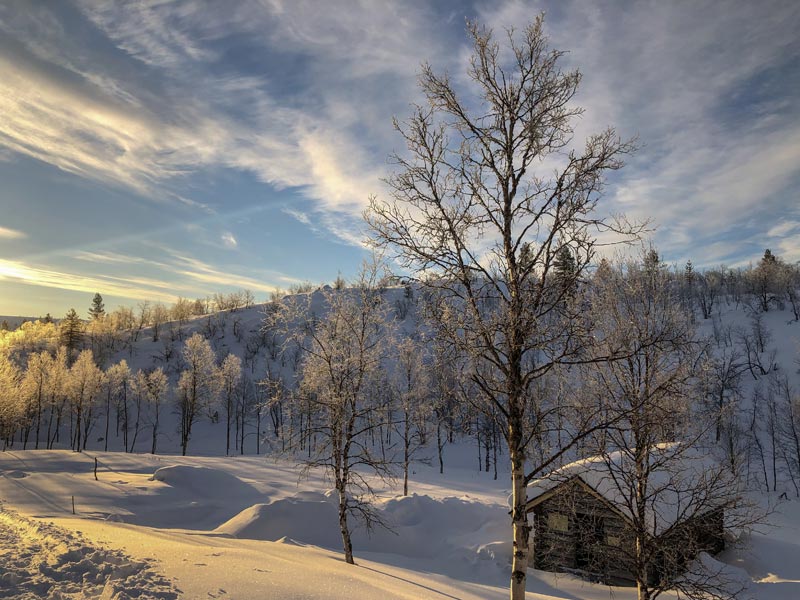
If you choose the most popular times (Easter, for example), and of course depending on the location of your tour, you will certainly see other users of the mountains during your tour and in the cabins at night, especially locals. This can be a wonderful opportunity to strike up some conversations with people you’d never normally meet and is another wonderful aspect of outdoor life.
But go at other times and you may not see anyone at all! For our ski group in Halti in February, we had the mountains completely to ourselves for the week apart from meeting a couple of park rangers one day and having some company at one of the cabins on our last night.
To spend an extended period “alone” (in the company of your group and guide of course) in such a remote area is a real privilege, and not an experience you’ll get on a ski holiday in the Alps!
I really don’t want to ski. What about snowshoeing?
Absolutely! Snowshoes aren’t as commonly used for extended tours because you can’t cover the same distance as you can on skis, and skis allow you to move much more efficiently.
That said, snowshoes offer their own attraction – they don’t require any experience at all and allow you to access terrain that might be difficult to reach even on skis.
If you’d like to give snowshoeing a go, see the information on our Snowshoeing in Hossa National Park tour in Finland.
OK, so I haven’t done any ski touring before, but I’d like to give it a go. What are my options:
We’re glad you asked! Here we go….
Introduction to Backcountry Ski Touring in Langsua National Park (Norway)
If you’ve never been on skis before, this tour is still a possibility for you. You’ll certainly have an advantage if you’ve done at least a little skiing before (downhill or cross country) or if you get a little practice before your trip on a local dry slope, etc, but even complete ski beginners can join this tour, provided you have suitable general outdoor experience, level of fitness and are willing to pick up a few bumps and bruises when you fall!
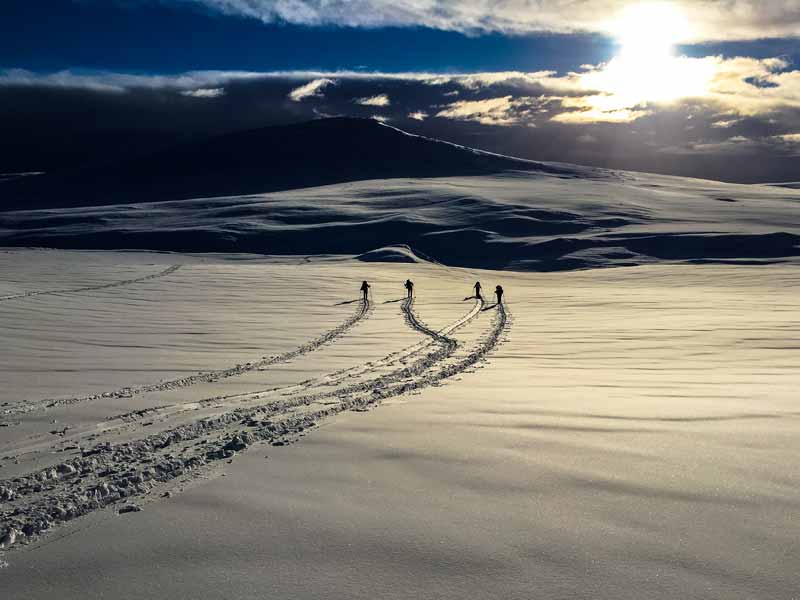
The tour is divided into two parts. You begin with some days based at mountain lodge, where you can take day tours with light pack. This “training” period gives you the opportunity to gain confidence and stability and improve your technique.
The second half of the week is then a mini-expedition, skiing between mountain cabins, when you’ll be carrying a heavier pack and developing your skills.
Discover Mountain Ski Touring in Lapland (Sweden)
You’ll need to have some basic downhill and/or cross country ski experience to join this tour, but don’t need any previous experience of ski touring.
Starting from mountain station, you are transferred to a wilderness cabin (by snowmobile, with the option to ski some of the way). From here, you’ll be taking day training tours into the surrounding wilderness, allowing you to ski with just a daypack and practise on a range of different types of terrain.
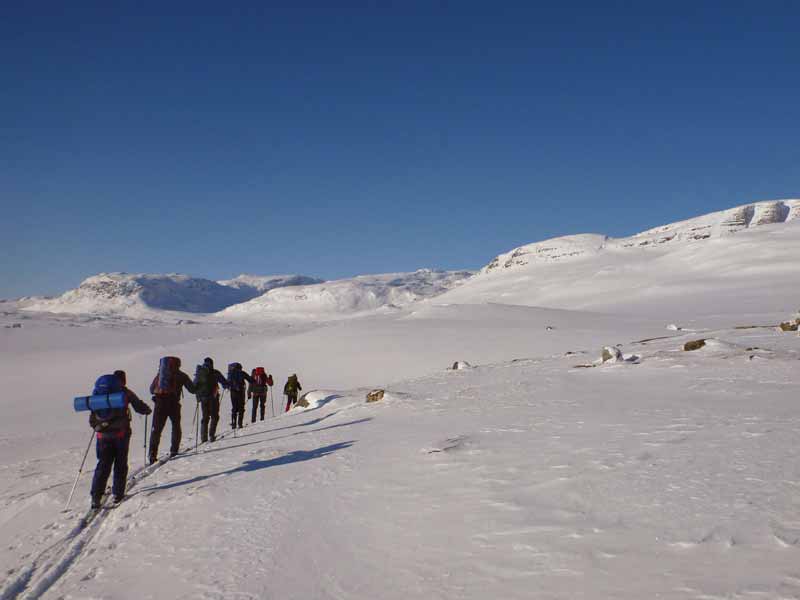
At the end of the week, you’ll then be ready to ski back to the mountain station carrying a full pack – a great culmination to the week and a chance to show yourself how much you’ve learned!
Backcountry Skiing and Northern Lights in Finnish Lapland (Finland)
If you’re looking for a challenging wilderness expedition and to get a real feel of what it’s like to be an Arctic adventurer, this is the tour for you!
There are two itineraries to choose from:
- The Lemmenjoki tour uses OAC Kar skies (shorter and thicker than standard backcountry skis) and takes place in a more sheltered forest area.
- The Halti tour uses standard backcountry skis and takes place in more exposed, open terrain.
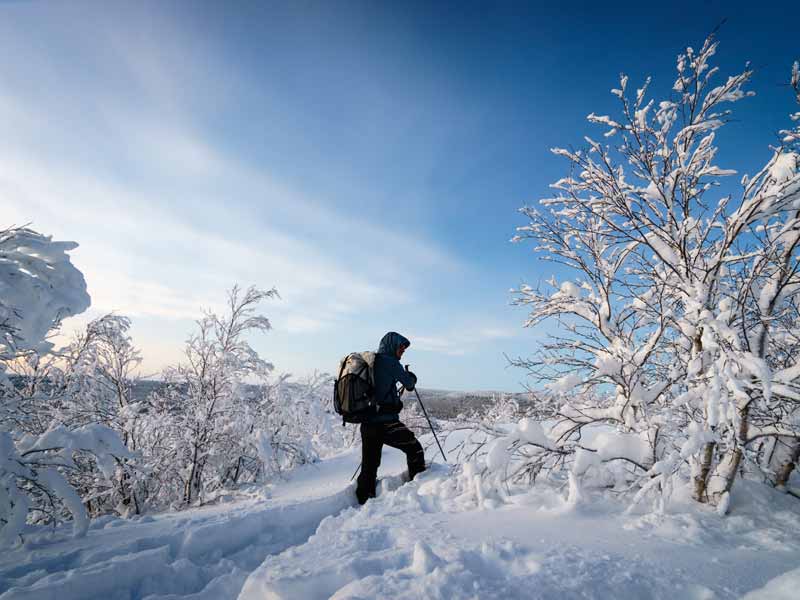
Both have a high level of physical challenge, with Halti typically having the highest challenge. For both tours, you’ll be skiing either with a full pack or pulling a pulk (alternating between these during the tour). Accommodation is in cabins, but for safety you’ll have full winter camping gear with you, giving the option to up the challenge further with some nights under canvas if you wish!
These are tours which offer a high degree of physical challenge, but do not require a high degree of technical skiing. You will need to have done at least a little skiing before (downhill or cross country) and have some basic confidence on skis, but the main challenge is in the expedition nature of the trips and the remote terrain.
Ski touring – like hiking, but snowier!
If you have any questions or would like help choosing the best option for you to discover this wonderful winter activity, please get in touch and we’ll be more than happy to chat!
Best regards
Bob from the Nature Travels Team
